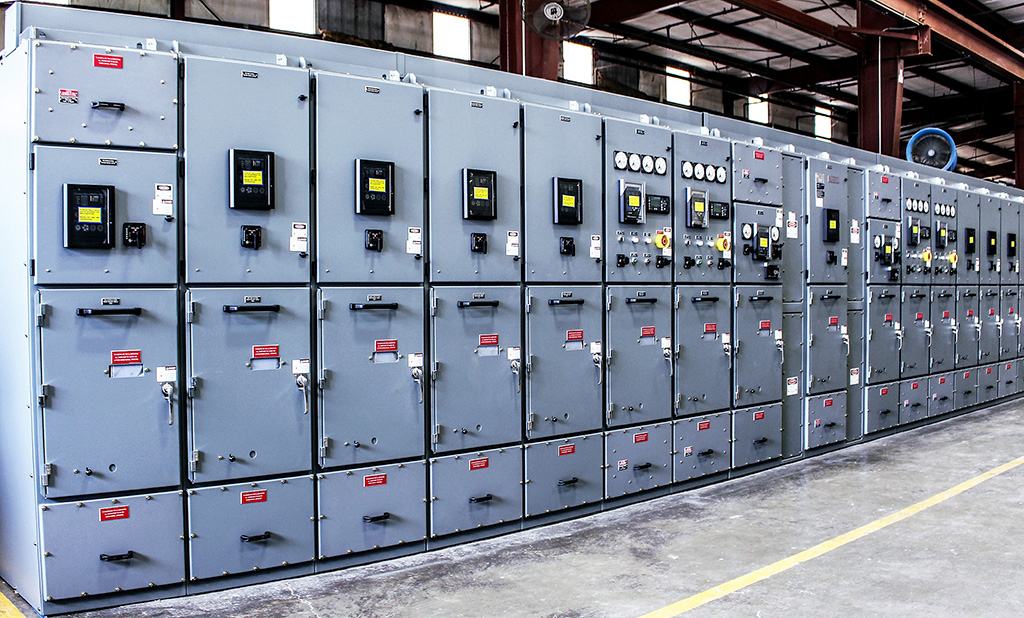
- English
- Español
- Português
- русский
- Français
- 日本語
- Deutsch
- tiếng Việt
- Italiano
- Nederlands
- ภาษาไทย
- Polski
- 한국어
- Svenska
- magyar
- Malay
- বাংলা ভাষার
- Dansk
- Suomi
- हिन्दी
- Pilipino
- Türkçe
- Gaeilge
- العربية
- Indonesia
- Norsk
- تمل
- český
- ελληνικά
- український
- Javanese
- فارسی
- தமிழ்
- తెలుగు
- नेपाली
- Burmese
- български
- ລາວ
- Latine
- Қазақша
- Euskal
- Azərbaycan
- Slovenský jazyk
- Македонски
- Lietuvos
- Eesti Keel
- Română
- Slovenski
- मराठी
- Srpski језик
How Switchgear Works?
2024-05-20
How Switchgear Works?
Switchgear is a critical component in electrical power systems, responsible for controlling, protecting, and isolating electrical equipment to ensure the reliable operation of power distribution networks. In this article, we will explore the workings of switchgear, its types, components, and applications in various industries.
What is Switchgear?
Switchgear refers to a combination of electrical disconnect switches, fuses, and circuit breakers used to control, protect, and isolate electrical equipment. It is essential for ensuring the safety and efficiency of electrical power systems. By de-energizing equipment to allow for maintenance work and clearing faults downstream, switchgear plays a pivotal role in power system management.
Types of Switchgear
High-Voltage Switchgear: Used for systems operating at high voltages (above 36 kV). This type of switchgear is typically found in power transmission and distribution networks. It includes components such as circuit breakers, disconnectors, and protection relays designed to handle high-voltage levels.

Medium-Voltage Switchgear: Operates between 1 kV and 36 kV. It is used in industrial plants, commercial buildings, and utility substations. Medium-voltage switchgear is crucial for distributing electricity safely and efficiently to various parts of a facility or to different buildings in a complex.
Low-Voltage Switchgear: Operates below 1 kV. It is commonly used in residential, commercial, and industrial applications for distribution and control of electrical power. Low-voltage switchgear includes distribution boards and panels that ensure safe electricity flow to end-user devices and systems.
Key Components of Switchgear
Circuit Breakers: These devices automatically interrupt electrical flow in case of a fault, such as an overload or short circuit, protecting equipment and preventing damage. Circuit breakers can be reset after a fault is cleared, making them reusable.
Disconnect Switches: Manually operated switches used to isolate electrical circuits for maintenance or repair. Disconnect switches provide a visible break in the circuit, ensuring complete de-energization of the system.
Fuses: Provide overcurrent protection by melting and breaking the circuit when excessive current flows through. Unlike circuit breakers, fuses need to be replaced after they operate.

Relays: Electromechanical or electronic devices that detect abnormal conditions and initiate the operation of circuit breakers. Relays can sense overcurrent, undercurrent, overvoltage, undervoltage, and other electrical anomalies.
Busbars: Conductive bars that distribute power to multiple outgoing circuits within the switchgear. Busbars are designed to handle high currents and are typically made of copper or aluminum.
Instrument Transformers: Devices that reduce high voltages and currents to measurable levels, providing inputs to metering and protection systems. Instrument transformers ensure accurate readings and protection for equipment.
How Switchgear Operates
Switchgear operates by continuously monitoring electrical circuits for abnormal conditions such as overcurrent, short circuits, or equipment failures. When such conditions are detected, the protective devices (circuit breakers or fuses) are activated to interrupt the flow of electricity, thereby isolating the faulty section of the circuit. This isolation prevents damage to the equipment and reduces the risk of electrical fires or other hazards.
Steps in Switchgear Operation:
Detection: Relays or sensors detect abnormal conditions in the electrical circuit.
Activation: The relay sends a signal to the circuit breaker to trip, interrupting the flow of electricity.
Isolation: The circuit breaker isolates the faulty section, preventing further damage.
Restoration: After the fault is cleared, the circuit breaker can be reset, and normal operation can resume.
Applications of Switchgear
Switchgear is used in a variety of applications across different industries:
Power Plants: Ensures the safe and efficient operation of generation equipment and the transmission of electricity. Switchgear in power plants manages the flow of electricity from generators to the transmission network.
Industrial Facilities: Provides reliable power distribution and protection for manufacturing equipment and processes. Industrial switchgear systems are designed to handle the high power demands and harsh environments of manufacturing plants.
Commercial Buildings: Controls and distributes electrical power for lighting, HVAC systems, and other essential services. Switchgear in commercial buildings ensures safe and efficient power management for office spaces, shopping malls, and other commercial establishments.
Utility Substations: Plays a crucial role in the distribution and transmission of electricity to end-users. Substation switchgear includes high-voltage circuit breakers and transformers that manage the flow of electricity across the grid.
Benefits of Using Switchgear
Safety: Protects personnel and equipment by quickly isolating faults. Arc-resistant switchgear, for example, is designed to contain and redirect arc flash energy away from operators.
Reliability: Ensures continuous operation of electrical systems by preventing damage and minimizing downtime. Switchgear components are built to withstand harsh conditions and provide consistent performance.
Efficiency: Improves the overall efficiency of power distribution networks by optimizing load management and fault isolation. Advanced switchgear designs incorporate intelligent control systems for better energy management.
Scalability: Allows for easy expansion of electrical systems to accommodate growing power demands. Modular switchgear designs enable the addition of new circuits and components without major overhauls.
Conclusion
Switchgear is an indispensable part of modern electrical power systems, providing control, protection, and isolation to ensure the safe and efficient operation of electrical equipment. Understanding how switchgear works and its various applications can help in selecting the right type for specific needs, enhancing the reliability and safety of electrical systems. Whether used in power plants, industrial facilities, commercial buildings, or utility substations, switchgear plays a vital role in managing the flow of electricity and safeguarding infrastructure.
For more information on switchgear and its applications, feel free to explore our other articles or contact our experts.




